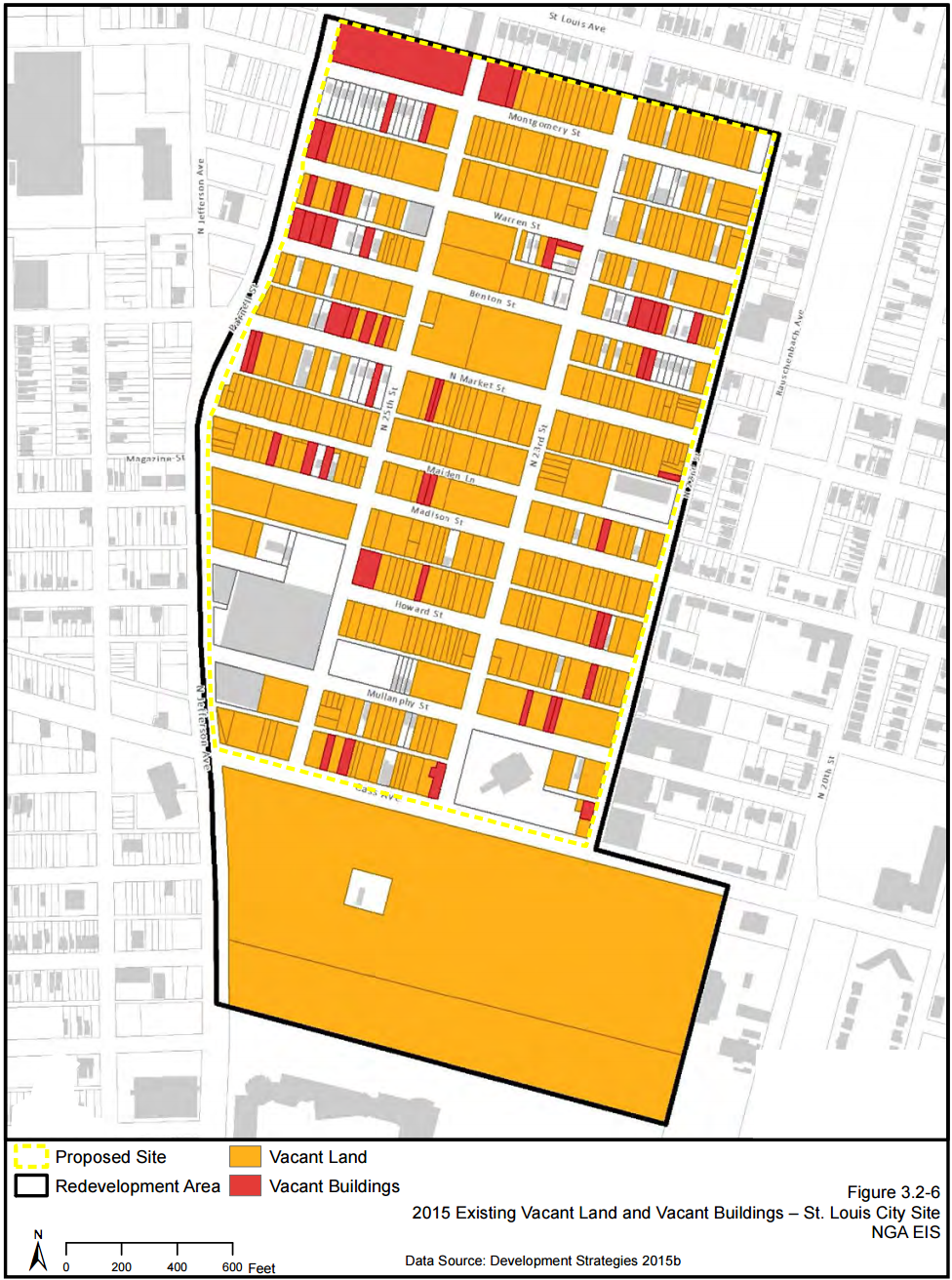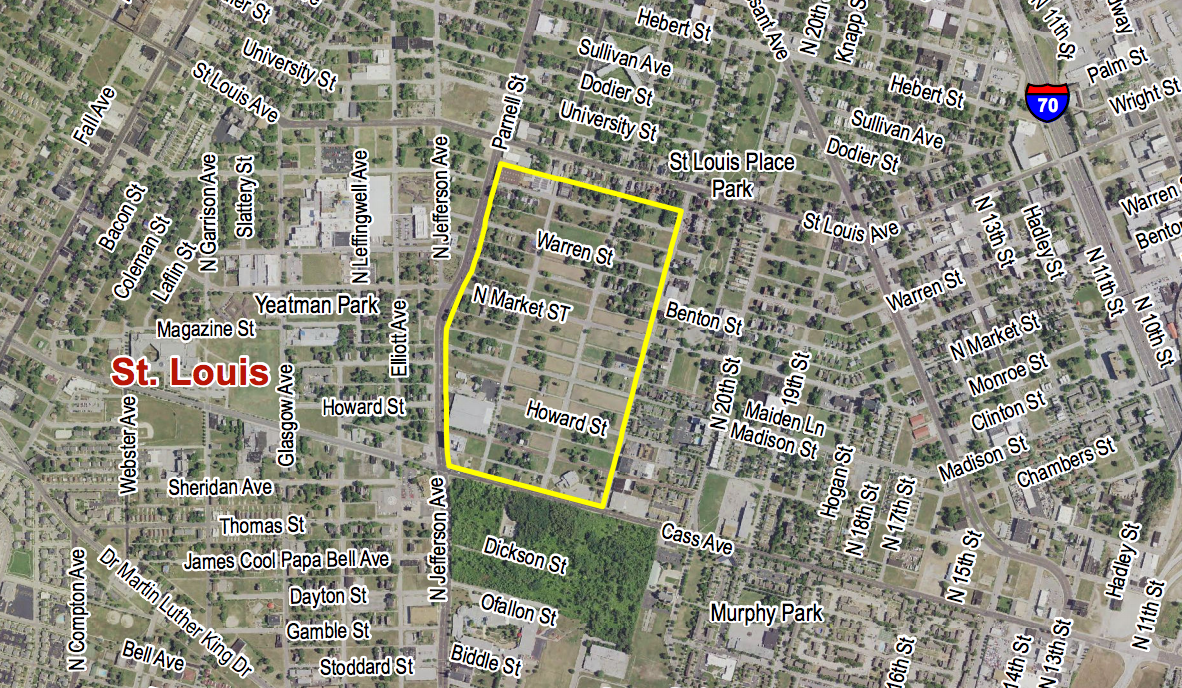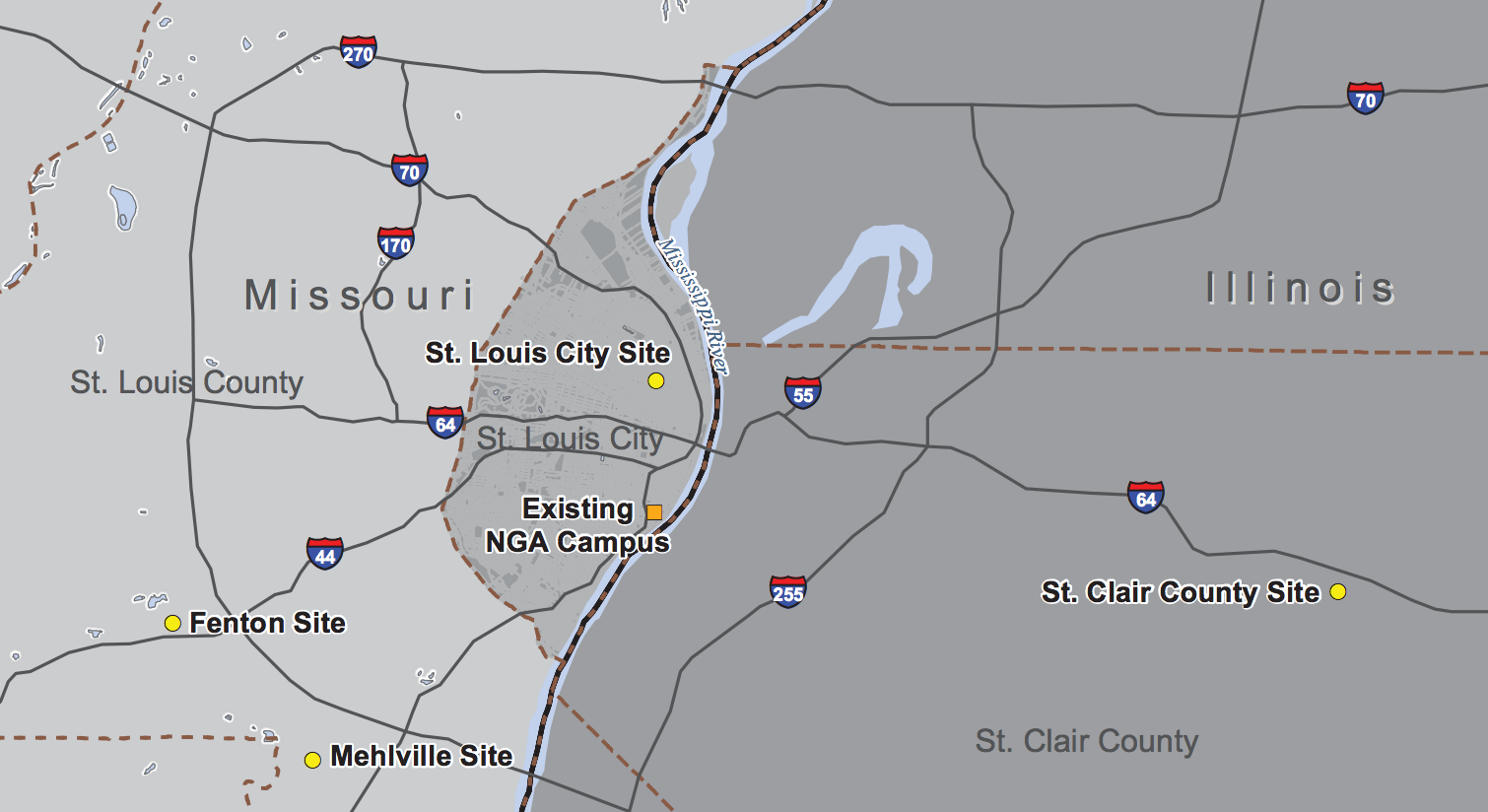
The Environmental Impact Statement for the Next NGA West Campus in the Greater St. Louis Metropolitan Area is a 491-page comprehensive explanation of the process that led to the selection of north St. Louis City as the preferred site for the new NGA. We’ll pulled a few select sections from the document that highlight why St. Louis was selected.
In short, the NGA found that the City of St. Louis site offered the best location for current employees, that young future employees preferred the site, that it was best suited to leverage partnerships with Saint Louis University, Washington University in St. Louis, and others, and best fit federal guidelines that preference urban investment and redevelopment.
The full Final EIS is below.
[North St. Louis City Chosen for $1.75B NGA West]
________________
2.8.5 Agency Preferred Alternative Based upon the Agency’s adherence to the NEPA process and an evaluation of all of the information available, NGA has determined the Agency Preferred Alternative for the Next NGA West Campus facility to be the St. Louis City Site. NGA’s highest priority is to develop a campus that supports mission efficiency and flexibility.
The St. Louis City Site provides an opportunity to develop and maintain relationships with industry partners that is consistent with the Agency’s future vision. The opportunity to cultivate and foster relationships with academia, industry and governmental partners, and technological incubators emerging near the St. Louis City Site outweighed the opportunities at the St. Clair County Site. Additionally, the St. Louis City Site better addresses the recruitment and retention of the future NGA workforce.
The St. Louis City Site was identified as the option that yielded greater environmental advantages between the two sites. This project location contains no biological habitat beyond what supports urban species. It would not impact any habitat for migratory birds, listed species, or impact any water resources. The project includes the opportunity to transform aesthetics in the area and remediate environmental contamination.
While the St. Clair County Site presents a stronger security posture than an urban environment, it is anticipated that a strong security presence, security management system, onsite parking and careful site planning and building design features can be implemented at the St. Louis City Site location. Close coordination with the local authorities will be planned to develop security strategies with the City of St. Louis law enforcement and to gain concurrent jurisdiction.
Overall, the St. Louis City Site offers an advantage to meet the consideration requirements for many federal priorities. All of the applicable guidance favors the St. Louis City Site, especially the most current directives found in E.O. 13693, Planning for Federal Sustainability, which favors the redevelopment of brownfield locations, and E.O. 12072, which favors development in central business districts.
________________
ES-5.3 St. Louis City Site (Preferred Alternative) The St. Louis City Site (Intersection of Cass and Jefferson Avenues, St. Louis, Missouri) is a 100-acre site located within the city limits of the City of St. Louis. This area is predominantly vacant land with some residential, light industrial, and commercial use. It is situated just north of the City of St. Louis’ downtown at the intersection of Jefferson and Cass Avenues. The City of St. Louis recommended this site for review because it is part of an ongoing redevelopment effort by the City.
Disinvestment has occurred over decades at the site, leading to an 85 percent vacancy rate as of December 2015. In total, the St. Louis City Site (which does not include the former Pruitt-Igoe Site) consists of 76 percent vacant land, 9 percent vacant residential lots (lots with vacant homes), and 13 percent owner or renter-occupied residences. The remaining 2 percent of the parcels are commercial (0.9 percent vacant, 0.5 percent owner occupied and 0.4 percent tenant occupied), churches (0.15 percent), and educational use (0.05 percent) (Halliday, 2015a, pers. comm.).
A limited number of community resources and homes remain within the Proposed Area footprint and vital components of a cohesive community are lacking. Many of the vacant residential lots are unmaintained and some have been converted into urban garden plots. As a result of the unmaintained lots, the City has designated the site a blighted community (Development Strategies, 2015a). The St. Louis City Site is within the proposed NorthSide Regeneration Project area (NorthSide Regeneration St. Louis, 2015) and within the U.S. Department of Housing and Urban Development’s footprint for an Urban Promise Zone initiative for the City of St. Louis. The St. Louis City Site presently has multiple landowners, many of whom have entered into agreements of sale with the City of St. Louis.
________________
Of the four alternatives considered, the Mehlville Site and St. Clair County Site were determined to have the greatest adverse impacts with fewest environmental advantages. Both of these sites were of concern to the U.S. Fish and Wildlife Service because of long-term impacts to habitat corridors supporting federally listed Threatened and Endangered Species. If the construction and operation of the Next NGA West Campus were to occur at either of these locations, the purchase/compensation of offsite habitat would be required as mitigation.
________________
With regard to cost, the St. Louis City and St. Clair County sites presented the lowest cost, with both sites being formally offered at no cost to the federal government.
________________
From an industry partner perspective, St. Louis is receiving national attention in its success as a city for technology industry startups. The relationships NGA has established with the TREX incubator in downtown St. Louis and the firms in the CORTEX Innovation Community in midtown are promising in terms of future technology supporting GEOINT. While industry relationships can be maintained on either side of the river, there is an infusion of energy that is apparent in locating in the midst of incubators and innovation.
NGA currently enjoys strong relationships with Washington University and St. Louis University, both located in the City of St. Louis. The Aeronautical Office has a longstanding relationship with St. Louis University, which reflects the university’s commitment to aeronautical engineering and the strong history of St. Louis in aviation. This relationship provides a strong recruitment pool for NGA.
The proximity of the St. Louis City Site is helpful in making the most of student/faculty relationships with the agency. Additionally, NGA enjoys ongoing partnerships with the Federal Bureau of Investigation and the U.S. Coast Guard. Lastly, NGA maintains many partnering relationships with others outside the St. Louis area. Therefore, proximity to Lambert International Airport also was considered as an advantage to the St. Louis City Site.
________________
From a retention standpoint, approximately 70 percent of the current NGA South 2nd Street workforce live in Missouri. The St. Louis City Site offers the least amount of disruption to the NGA workforce and reduces the need for families to relocate to a different portion of the metropolitan area. The St. Louis City Site also provides many access points and route options for commuters compared to the St. Clair County Site.
________________
From a recruitment standpoint, many studies indicate that newer college graduates prefer urban environments. The large size of the millennial generation, and its preference for urban living, has been a driver for population growth in cities in recent years. NGA conducted its own survey of 152 students who are currently in the hiring pipeline regarding their employment preferences. Sixty-seven responded to the survey. Only those who were familiar with the Next NGA West Campus project (48 respondents) were asked to respond to questions specifically regarding the four sites. When asked about the specific sites and ranking them 1 through 4, 42 percent ranked the St. Louis City Site as their top choice, while 25 percent ranked St. Clair County Site as their top choice. Conversely, 25 percent of the respondents ranked St. Louis City Site as their least desirable site, and 50 percent ranked St. Clair County Site as their least desirable site.
________________
Overall, the St. Louis City Site offers an advantage to meet the intent of many federal priorities. As an example, E.O. 13693, Planning for Federal Sustainability, expresses that consideration be given to brownfield and infill development and calls for a reduction of greenhouse gas emissions. While carbon dioxide emissions were found to be within the reporting thresholds for both the St. Clair County Site and the St. Louis City Site, the EIS does identify a contrast between the emissions generated from the 31.8 mile average commute increase to the St. Clair County Site versus a 0.2 mile increase to the St. Louis City Site in Section 4.13. The St. Louis City Site demonstrates greater compatibility with the E.O. 13693 signed in March of 2015.
E.O. 12072, Federal Space Management, requires that first consideration be made for federal agencies to locate in urban areas/central business districts. The DoDI 4165.71 for Real Property Acquisition further supports E.O. 12072 by instructing DoD agencies to conserve existing urban resources and encourage the development and redevelopment of cities. The St. Louis City Site is best suited to fulfill both E.O. 12072 and the DoDI as it relates to redevelopment of urban/central business district criteria. The St. Clair County Site would spur future development for St. Clair County much in line with the development plans for the area. However, new development along metropolitan edges meets neither brownfields nor urban/central business district criteria, reduce greenhouse gas emissions, nor does it support other initiatives such as Promise Zones or the E.O. 13062 for SC2.
Final EIS Next NGA West Campus Greater St. Louis Area 4-1-2016 by nextSTL.com



